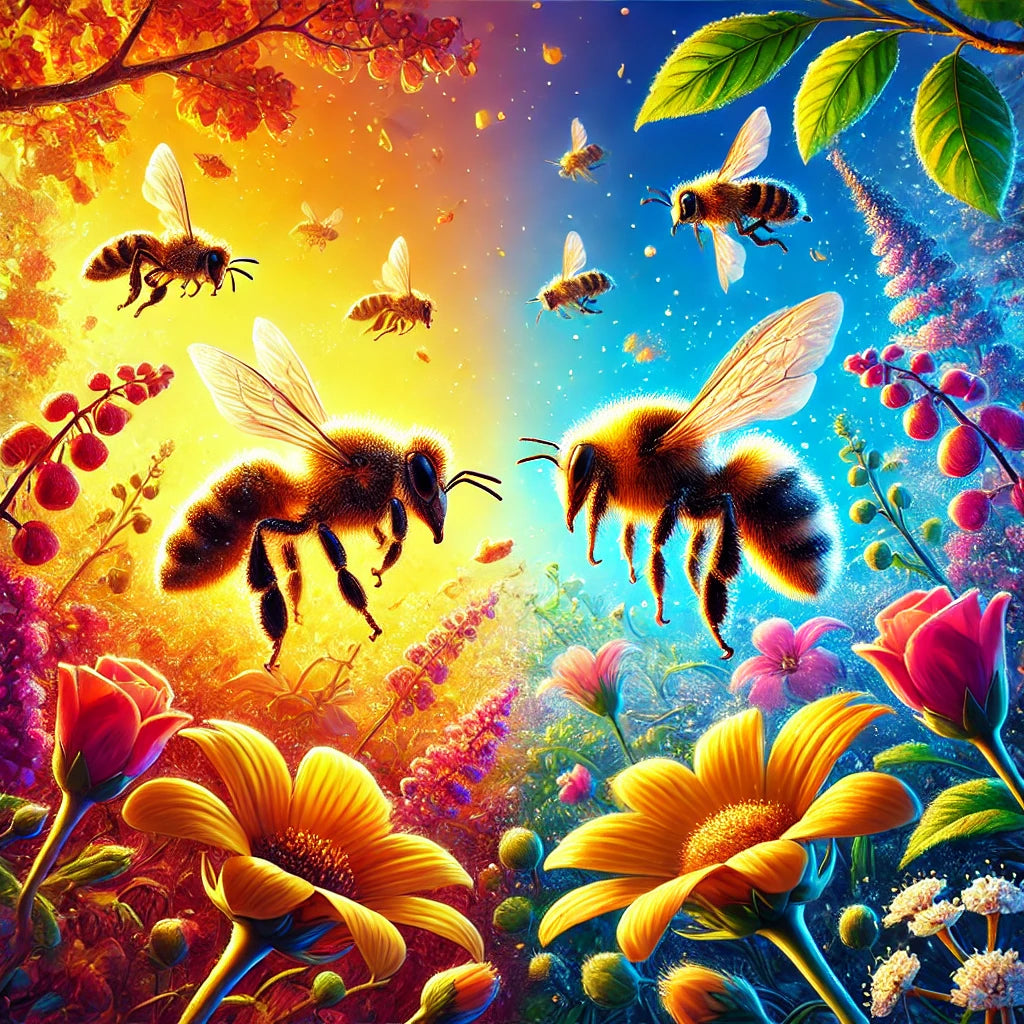Understanding the difference between bumble bee and honey bee is essential for anyone interested in beekeeping or gardening. Both bees are critical pollinators, but they serve different roles in our ecosystems and agricultural industries. Bumble bees are larger, rounder, and covered in dense fur, which helps them stay warm in colder climates.
They also use a unique method called buzz pollination, which makes them more effective at pollinating certain plants, like tomatoes. On the other hand, honey bees are more streamlined and are known for producing honey and pollinating large-scale crops. Their ability to communicate through the waggle dance enables them to efficiently share information about food sources..
These species also differ in their nesting habits. Honey bees live in large, perennial hives, while bumble bees create smaller, seasonal nests. Understanding these differences can help you better manage your garden or bee colonies, ensuring both species thrive
Physical Differences Between Honey Bees and Bumble Bees
Bumble bees are generally larger, rounder, and hairier than honey bees. This thick coat helps them stay warm in colder climates, which is why you often see bumble bees out earlier in the spring. Honey bees, in contrast, are more slender, with less visible hair and a distinctive wasp-like waist. Their color can range from golden yellow to dark brown. These physical differences make it easier to tell them apart when you're observing bees in your gardeN.
Nesting Habits and Colony Size
The nesting habits of these two bees are quite different. Honey bees build large, intricate hives in hollow trees or man-made hives and can host up to 80,000 bees. These hives are designed to last for many years. Bumble bees, however, nest underground or in piles of debris and rarely have more than a few hundred individuals in their colony. Bumble bee nests last only one season, with the queen hibernating alone through the winter.
If you're considering how to start a bee farm, understanding these nesting differences is crucial for managing hives.
Pollination Methods: Efficiency and Technique
Both bees are excellent pollinators, but they approach the job differently. Bumble bees are known for their unique buzz pollination technique, where they vibrate their wings to release pollen from deep within flowers. This makes them especially effective at pollinating crops like tomatoes and cranberries. Honey bees, on the other hand, use a more efficient system for nectar collection. They communicate through the famous waggle dance, directing other bees to the best pollen sources. While honey bees may cover more ground, bumble bees are more thorough in their approach.
Stinging Behavior: One Sting or Multiple?
A key difference between bumble bee and honey bee is how they defend themselves. Bumble bees can sting multiple times without dying, as their stingers are smooth. Honey bees, however, have barbed stingers, which get lodged in the skin when they sting. As a result, the honey bee dies after stinging. Despite this, both species are relatively non-aggressive and will only sting when provoked.
Using bee trap attractants can help safely manage aggressive swarming or intrusions into your garden.
.
Winter Survival Strategies
When winter arrives, honey bees stay inside their hives, clustering together for warmth. They survive by feeding on the honey they’ve stored during the warmer months. Bumble bees, however, do not store honey for the winter. Instead, the queen bumble bee hibernates, while the rest of the colony dies off. This seasonal survival strategy means that bumble bees are not as active year-round as honey bees.
.Role in Agriculture and Ecosystem
Both species play vital roles in agriculture, but they serve different purposes. Honey bees are essential for large-scale agricultural pollination because they can be easily managed and moved to different locations. They are especially important for crops like almonds, apples, and avocados. Bumble bees, due to their buzz pollination technique, are better suited for specific crops that require more vigorous pollination, such as tomatoes and peppers.
The benefits of bees extend beyond agriculture, as they are essential for maintaining biodiversity in natural ecosystems.
.
Enhance Your Beekeeping with Swarm Commander
Now that you know the difference between bumble bee and honey bee, you can take steps to support both in your garden. By planting a diverse range of flowers and avoiding pesticides, you can help these important pollinators thrive. Each species contributes uniquely to our environment, and by understanding their behaviors, you can ensure your garden is a haven for both.
For beekeepers looking to optimize their colony management, Swarm Commander offers a range of tools from bee trap attractants to resources for bee hive relocation. Visit Swarm Commander to explore products that will help your bees flourish.
Frequently Asked Questions About Honey Bee vs. Bumble BeeHoney Bee vs. Bumble Bee
Q1. Are bumble bees better pollinators than honey bees?
Bumble bees are more efficient for certain crops due to their buzz pollination technique, while honey bees are ideal for large-scale agricultural pollination..
Q2. How many times can bumble bees and honey bees sting?
Bumble bees can sting multiple times, while honey bees can only sting once, as their stingers get lodged in the skin.
Q3. Do both species make honey?
Yes, but honey bees produce much larger quantities, as they store it for winter, while bumble bees produce only enough for their small colony..
Q4. How do honey bees and bumble bees survive the winter?
Honey bees huddle together in their hive and feed on stored honey, while bumble bee queens hibernate alone underground.
.Q5. What is buzz pollination, and why is it important?
Buzz pollination is a technique used by bumble bees where they vibrate their wings to release pollen, making them highly effective for pollinating certain crops.



